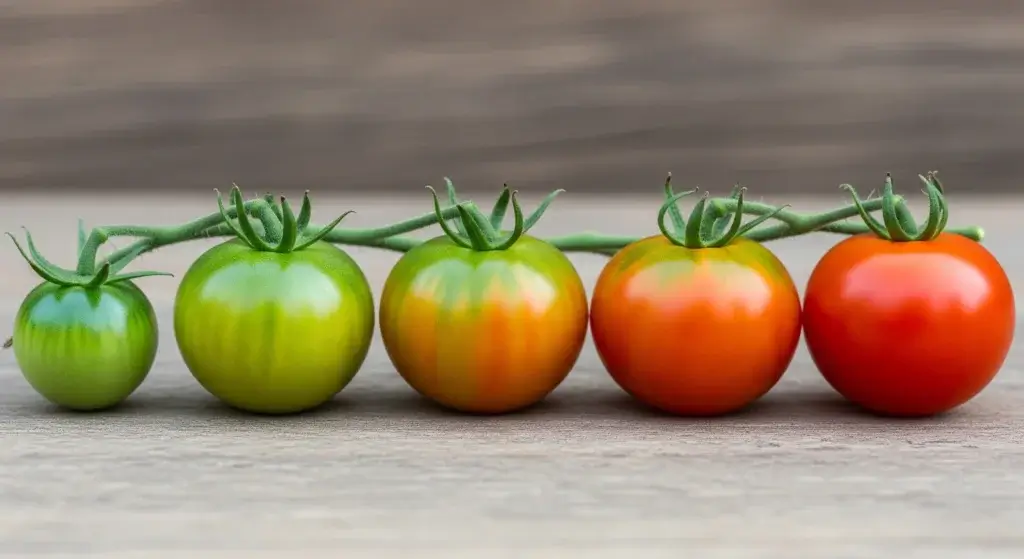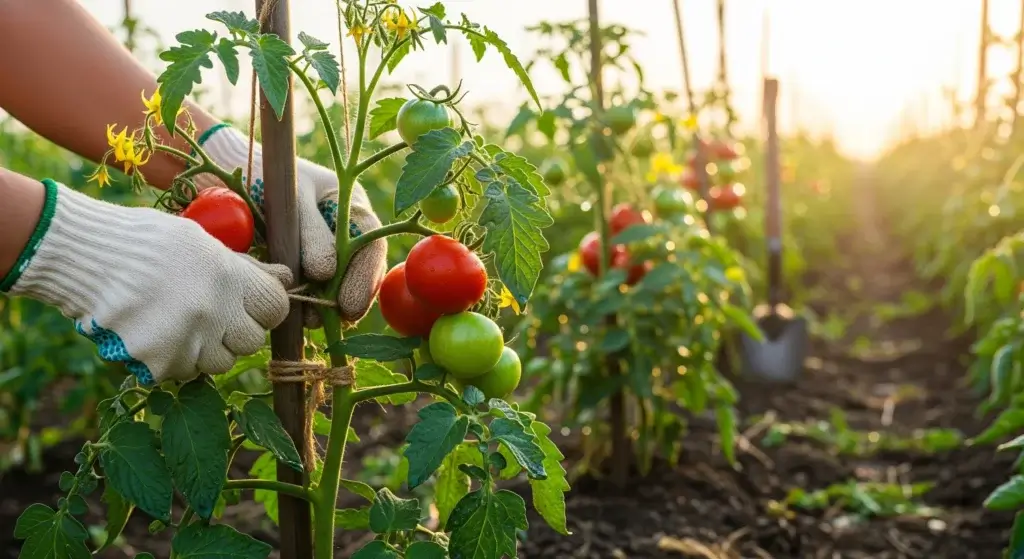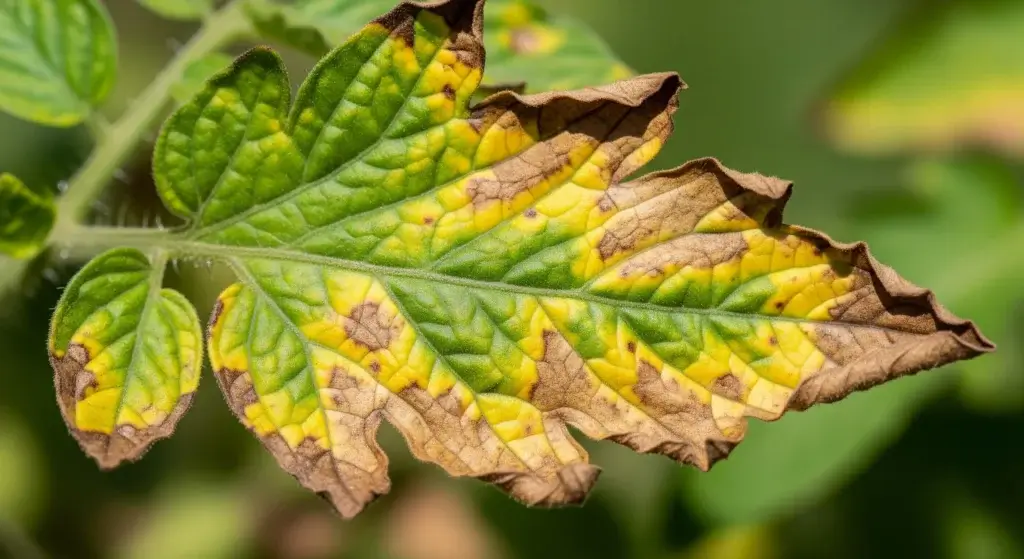
Growing mushrooms at home is like having a secret fungal garden—easy, fun, and totally cool.
Whether you’re all about that umami life, want to level up your indoor jungle, or eat greener, mushroom growing has you covered.
This guide walks you through picking the right shrooms and caring for them like a proud fungus parent.
Ready to flex your mycology skills? Let’s get mushy!
Why Grow Mushrooms at Home?
Growing mushrooms at home is like leveling up your kitchen and your planet’s health at once.
Here’s why you’ll want to join the fungus fun:
Nutritional value
Mushrooms are nutritional powerhouses—packed with vitamins, minerals, and antioxidants that give your body a legit health boost.
Think of them as nature’s little multivitamins, but way tastier.
Culinary versatility
From stir-fries to soups or that fancy pasta dish you pretend to know how to make, mushrooms bring unique flavors and textures that can turn any meal from “meh” to “heck yes!”
Sustainability
Growing your own shrooms is a sustainability win.
It cuts down on food waste and shrinks your carbon footprint because you’re skipping the whole “shipping-from-across-the-world” drama.
Plus, it’s a rad way to make your kitchen eco-friendly without needing to turn into a full-on hippie overnight.
Educational experience
It’s a fun science lesson right in your home.
Watching those little fungi grow is like your own mini nature documentary—minus the narration by David Attenborough (but hey, you can totally pretend).
- Read also: Lettuce Care Failures: The Biggest Mistakes Gardeners Make
- Read also: Organic Eggplant Care: Growing Healthy, Chemical-Free Eggplants
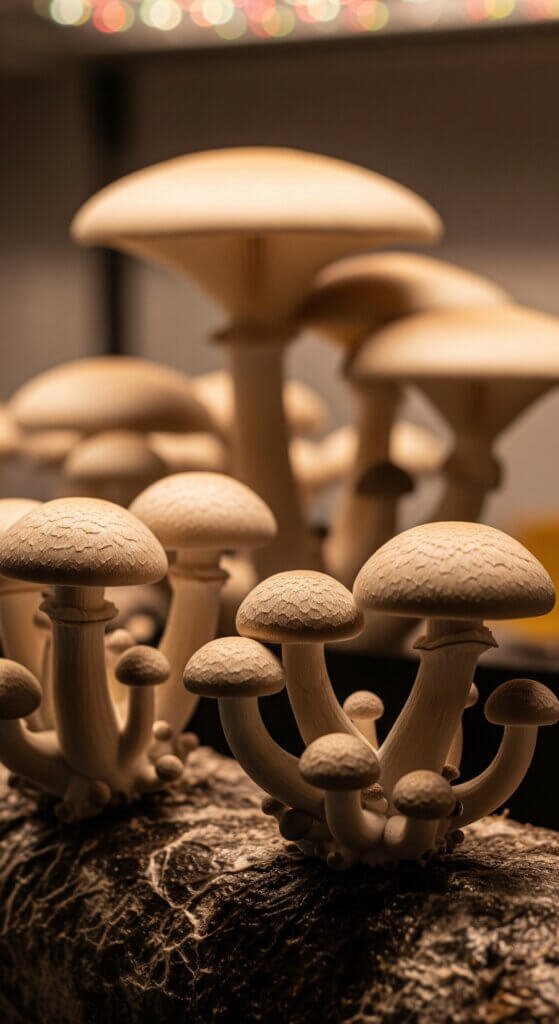
Choosing the Right Mushroom Species
Picking the right mushroom to grow at home can make or break your fungi game—so let’s keep it simple and beginner-friendly.
Think of it like choosing your starter Pokémon, but for mushrooms.
Oyster mushrooms (Pleurotus ostreatus)
These guys are the easy-going, fast-growers of the bunch.
They’re not picky and can thrive on all sorts of leftovers—coffee grounds, straw, you name it.
Plus, they look cool with their fan-shaped caps, so bonus points for style.
Shiitake mushrooms (Lentinula edodes)
Shiitakes are like the gourmet mushroom of the group—flavorful and meaty.
They prefer hanging out on hardwood logs or sawdust, which means a bit more setup, but the payoff is a kitchen-ready delicacy that makes your stir-fries pop.
White button mushrooms (Agaricus bisporus)
The classic champ of the mushroom world—think of them as the “vanilla” of mushrooms, but in a good way.
They grow well indoors and show up on almost every pizza and salad, so you know you’re getting versatile, familiar flavor.
Essential Supplies for Mushroom Cultivation
Ready to start your mushroom-growing adventure? Here’s your starter kit—think of it like assembling the Avengers, but for fungi.
- Mushroom spawn: This is your mushroom’s “seed” or mycelium—the living network that’ll grow your shrooms. Without it, no magic happens.
- Substrate: The all-you-can-eat buffet for your mushrooms. Straw, sawdust, coffee grounds—your fungi’s favorite snacks.
- Containers: Plastic tubs, bags, or trays are like your mushrooms’ cozy little apartments where they’ll grow.
- Humidity tent or plastic covering: Mushrooms love their humidity like you love binge-watching Netflix—keep it moist to keep them happy.
- Spray bottle: For misting your mushrooms—because a little hydration goes a long way.
- Thermometer and hygrometer: Your mushroom’s personal weather station. Keep an eye on temperature and humidity to avoid any fungal drama.
Feeling lazy? No worries—there are mushroom grow kits that come with everything pre-measured and instructions included.
It’s like having a fungus-growing cheat code for beginners.
Step-by-Step Guide to Growing Mushrooms
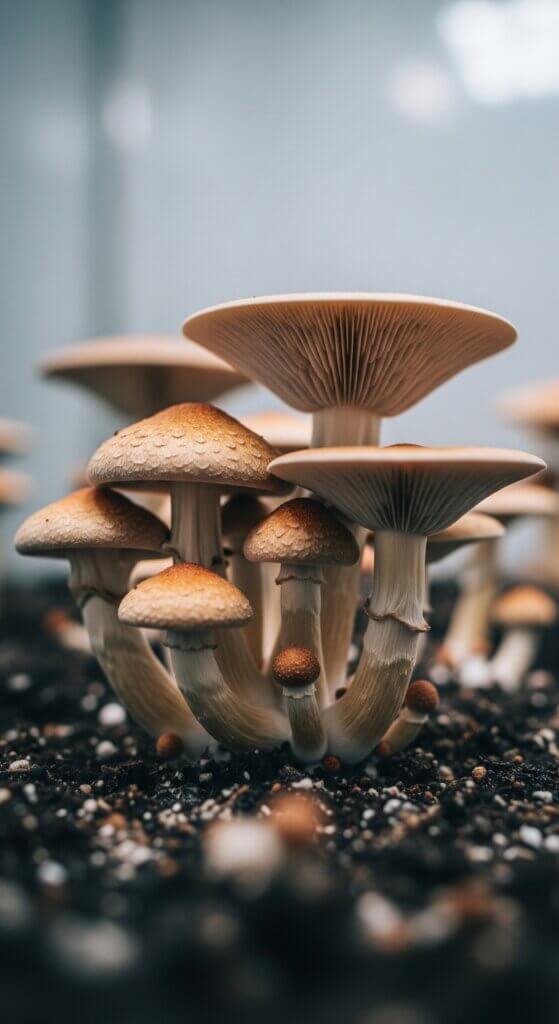
Ready to grow your own mushroom squad?
Here’s the step-by-step breakdown—think of it like leveling up in a fun (and slightly fungal) video game.
1. Prepare the substrate
First, you gotta give your mushroom’s dinner a clean slate.
Sterilize or pasteurize your substrate (straw, sawdust, coffee grounds, whatever you’re using) to kick out any unwanted microbes crashing the party.
You can soak it in hot water or bust out a pressure cooker if you want to go pro.
Clean substrate = happy mushrooms.
2. Inoculate the substrate
Once your substrate cools down, mix in your mushroom spawn—the “seeds” of your fungal garden.
Spread it evenly so the mycelium can colonize every nook and cranny.
Think of it like sprinkling magic dust over your mushroom buffet.
3. Incubation
Pop your inoculated substrate into a dark, warm spot—somewhere between 65-75°F (18-24°C).
This is your mushroom’s cozy incubator where the mycelium spreads like wildfire.
Be patient—this phase can take 2 to 4 weeks.
It’s like waiting for your favorite series to drop a new season.
4. Initiate fruiting conditions
Once your substrate is fully colonized, it’s time to flip the switch.
Introduce fresh air, light, and crank up the humidity to around 85-95%.
This combo tells your mushrooms, “Hey, time to grow up!”
Keep the temps comfy for your species, and watch those little caps start popping like popcorn.
5. Harvesting
When your mushrooms’ caps are fully grown but before they start dropping spores (that powdery stuff), it’s harvest time.
Use a sharp knife to snip them at the base—no yanking!
Pulling can mess up the substrate and slow down your next batch.
Tips for Successful Mushroom Cultivation
Keep it clean, always
Mushrooms are picky—they hate party crashers like mold and bacteria.
So, work in a tidy space and sanitize your tools.
Think of it like prepping for a fancy dinner party where only the right guests (your mushrooms) are invited.
Check your mushroom mood
Keep an eye on temperature and humidity like you’re babysitting a tropical pet.
Mushrooms love cozy warmth (65-75°F) and steamy air (85-95% humidity).
Too dry or too cold? They’ll sulk and stop growing.
Practice zen patience
Fungi don’t rush; they take their sweet time spreading mycelium and fruiting.
Resist the urge to poke, prod, or over-water.
Let them do their thing—you’re basically their chill coach.
School yourself
Don’t wing it. Use trusted guides, join mushroom forums, or stalk mycology pros on social media.
The mushroom community is surprisingly friendly and full of tips.
Common Challenges and Solutions

Contamination
If you spot fuzzy green, black, or weird-colored molds invading your setup, quarantine and cut out the bad bits ASAP.
Then double-check your sterilizing game—it’s your first line of defense.
Drying out
If your mushrooms look shriveled or stop growing, they’re probably thirsty.
Mist your setup regularly and keep a humidity tent or plastic cover on deck to maintain that fungal spa vibe.
Poor yield
Low yields happen.
Check your growing conditions—maybe the substrate’s not up to snuff or the temp/humidity needs tweaking.
Adjust, learn, and try again.
Mushrooms aren’t perfect, but neither are we.
- Read also: Pumpkin Care 101: Essential Organic Pumpkin Care Tips
- Read also: From Seed to Supper: Mastering Organic Broccoli Care
Conclusion: Embark on Your Mushroom Growing Adventure
Ready to dive into the wild world of mushroom growing?
It’s a cool mix of science, sustainability, and tasty eats—all rolled into one fun project.
Follow this guide, show your fungi some love, and soon you’ll be harvesting fresh ‘shrooms right from your own space.
Trust me, nothing beats flexing your inner mycologist while enjoying the freshest, homegrown fungi.
Let’s get growing!

